Free Course
Kanban: A Beginner’s Guide to Getting Started
About the Program
Originally a scheduling system for lean manufacturing developed by Toyota in the 1940s to improve manufacturing efficiency, Kanban has helped companies implement continuous improvement. The Kanban approach uses visual boards to form a visual project management tool. Though Kanban still lives on in many manufacturing industries, it was adapted for software development in the early 2000’s.
Today, Kanban has gained traction as a development framework due to its history and simplicity. A key element of the method, Kanban boards, can be found in many projects. But there’s much more to Kanban than just putting up “stickies” on a wall.
You will learn about Kanban, its history, and how you can effectively use Kanban in a work environment of continuous improvement. You will learn Kanban’s principles and how to apply them in your processes to enhance visibility and increase productivity; and the Kanban practices to help align daily workflows with your company’s strategic goals. Lastly, you will examine key differences between the Kanban method and the most popular Agile framework, Scrum.
Who Should Attend
Anyone interested in learning more about Kanban
What You Will Learn
- Describe Kanban history, concepts, roles and meetings
- Compare the Kanban principles against your workflow
- Apply and evaluate the 6 Kanban practices
- Relate 8 differences between Scrum and Kanban
Course Overview
Foundation Concepts
- Kanban history
- Key Kanban concepts
- Kanban roles
- Kanban meetings
Kanban Principles
- Kanban Principles
- Start with what you do now
- Agree to pursue incremental, evolutionary change
- Respect the current process, roles, responsibilities and titles
Kanban Practices
- Visualize the workflow
- Limit work in progress
- Manage flow
- Make process policies explicit
- Implement feedback loops
- Improve collaboratively
Understanding Lean Fundamentals
About the Program
Creating needed value. Eliminating non-value-added work. Reducing waste. Continually improve. Seek perfection. Lean “thinking”.
With the increased adoption of Agile methods and approaches, we realize Agile has its roots in the Toyota Production System (TPS) and its common name—Lean. The Agile movement began with the Lean mindset of providing customer and business value while reducing additional overhead. Today, the Lean approach is still considered a proven approach to reaching an organization’s most strategic goals.
It’s important to understand the core Lean mindset, and how we can use the Lean approach both in our work and everyday lives. At work, Lean is more important than ever because it helps organizations be more flexible, adapt to change, and continuously create value for customers.
This presentation will examine Lean, its history, and its underlying philosophy. We’ll review the idea of customer centricity and how value is defined by them. We’ll also explore the principles of Lean and the 8 forms of waste.
Learning Objectives
- Explain the history of Lean and the importance of the customer
- Define value and describe how it is assessed
- Relate and apply the 5 Lean Principles
- Analyze the 8 forms of waste
Course Overview
Getting Started
Lean Basics
- Lean history
- The customer
What is Value?
- Value defined by the customer
- Benefits and value
Lean Principles
- Principles defined
- Value
- Value Stream
- Flow
- Pull
- Perfection

International Institute for Learning
485 Madison Avenue, 13th Floor
New York, NY 10022-5803
+1-212-758-0177
+1-800-325-1533
Virtual Learning Support: +1-212-515-5100
Administration/Production: +1-212-515-5074
© 2023 International Institute for Learning. All rights reserved.

